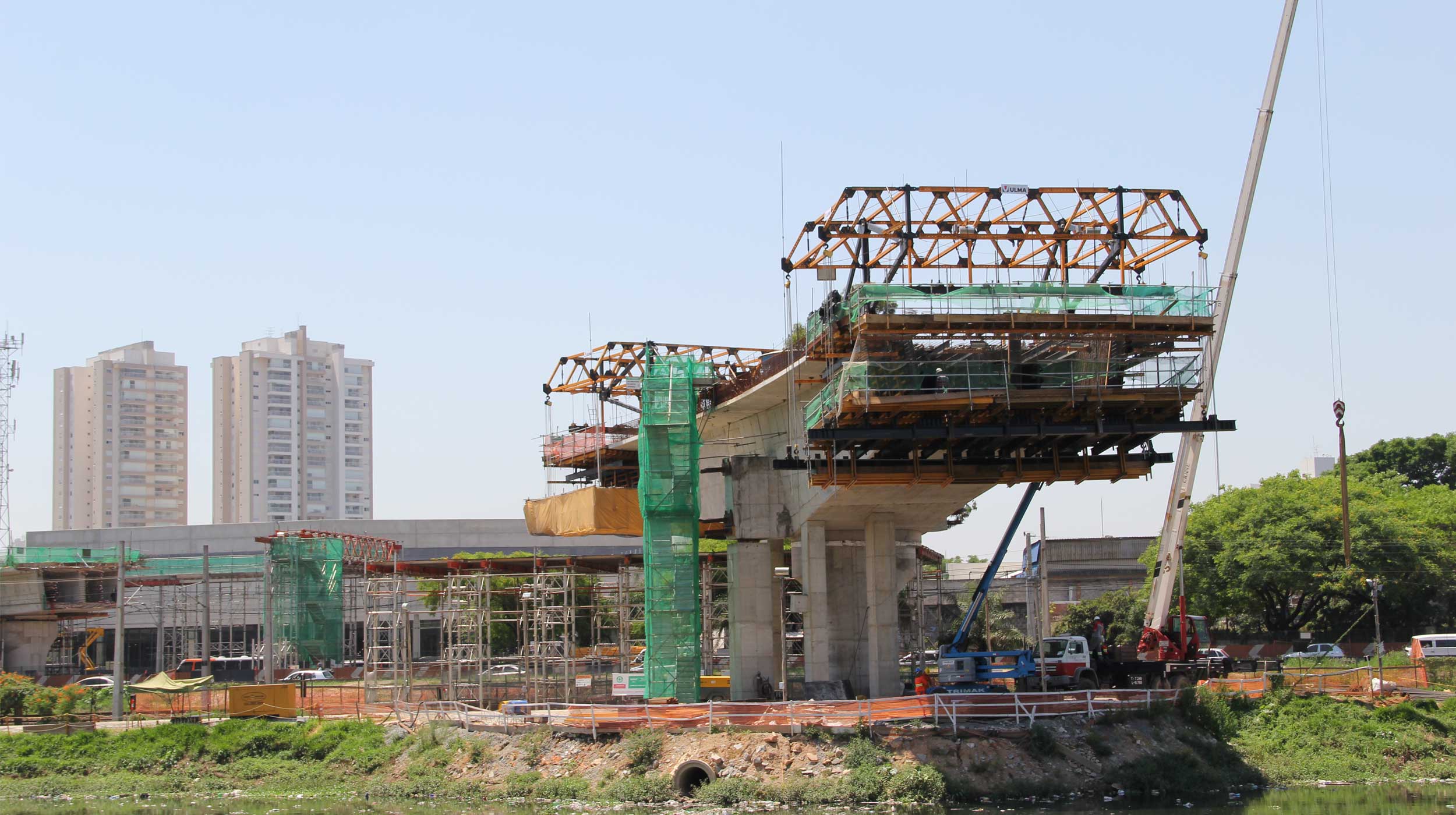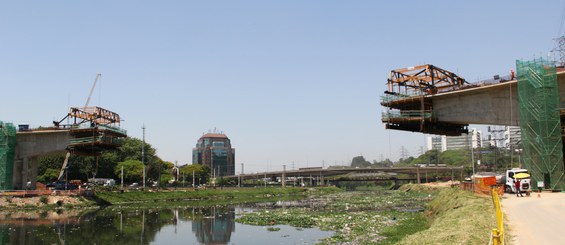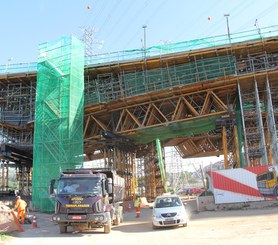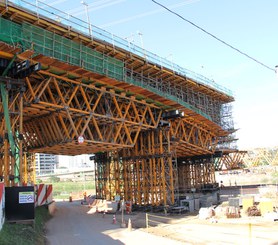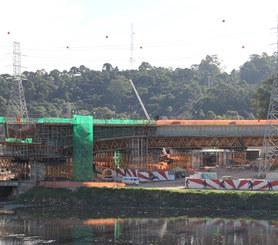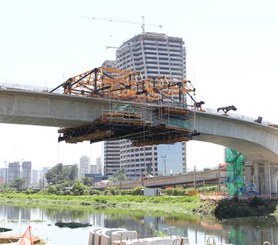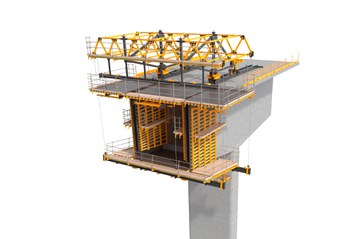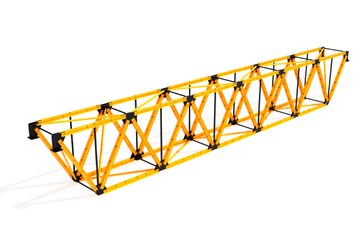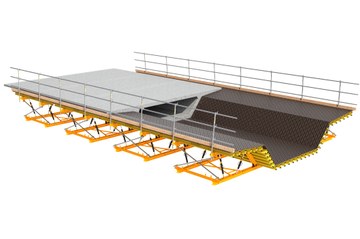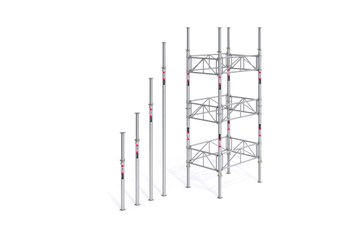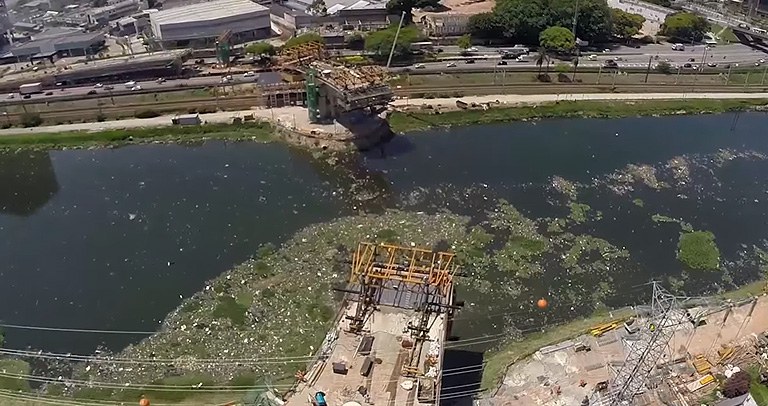Description
The impending Olympic Games in Brazil are transforming the metropolis of Sao Paulo, with marked effects on the city's road network. In the southern part of the city, the “Chucri Zaidan” urban plan includes various real estate developments, as well as infrastructural projects providing roadway, environmental, and social improvements. As part of this plan, two new bridges – Laguna and Itapaiuna – were built in the district of Marginal Pinheiros, and ULMA took part in both projects.
The Itapaiuna Bridge is a three-lane overpass stretching 340 m in length, which will alleviate traffic conditions in newly built residential areas.
ULMA solution
Facing the impossibility of building conventional shoring systems on the ground, with a distance of 113 m between riverbanks to span, the construction firm ODEBRECHT decided on a construction system as cost-efficient and lightweight as possible. In coordination with headquarters, the ULMA Brazil engineering team developed a solution employing our CVS cantilever formwork carriage, a flexible, high-performance system with a high load-bearing capacity and capable of adapting to varied deck widths.
Speed and efficiency were key factors for the construction firm. Accordingly, four CVS carriages were employed simultaneously to build bridge segments weighing approximately 190 tonnes each. With a cross-section ranging from 12.46 m to 15.05 m, and thickness varying between 4.80 m and 2.70 m, the bridge decks were built in 5 m segments, thus reducing construction time by 30%. Each carriage started at a different pier along the span, completing a total of 35 segments starting at 8 m in height and reaching up to 32 m over the centre of the river. The flexibility of the system allowed it to adapt with ease to deck section variations at each advance.
The nature of such infrastructural projects requires construction systems that optimise performance and efficiency at each phase of the building process. In order to meet these standards, ULMA developed new solutions for the project employing standard material available for hire. Standardisation of the CVS cantilever formwork carriage with the MK System allowed for considerable cost savings in an area where solutions until now have solely been customised. Moreover, the vast majority of the system’s pieces can be reused in multiple configurations after work has been completed.
Each of the CVS carriages was equipped with a hydraulic levelling and advance system, which – along with the independent configuration of the interior and exterior formwork systems – allowed pouring cycles to be completed in 5 days.
In accordance with ULMA safety standards, each structure was equipped with working platforms and accesses for all working areas, in addition to perimeter protection systems.
Apart from the actual river, the area is characterised by poor ground quality, a constant flow of heavy traffic, and various urban obstacles, all of which required ULMA's engineering team to design a variety of technical solutions for the formwork system. It was necessary, for example, to build various raised accesses in order to allow both vehicular and rail traffic to continue throughout the entire construction process. MK trusses more than 15 m long, set between MK shoring systems 10 m in height, created a structure that allowed construction to be undertaken without interrupting the local transportation network in any way. Both components are part of the MK System, offer high load-bearing capacity, and can be configured to accommodate the demands of any project. In areas with lower load-bearing requirements, braced aluminium ALUPROP’s were used to form the shoring system.
Independent from the structural elements of the construction system employed, ENKOFORM HMK bridge deck formwork adjusted perfectly to the varied deck widths along the entire 340 m length of the bridge.
In addition to supplying more than 1,400 tonnes of equipment, ULMA also provided engineering services covering implementation, pre-assembly, on-site assistance, and supervision throughout the project.

